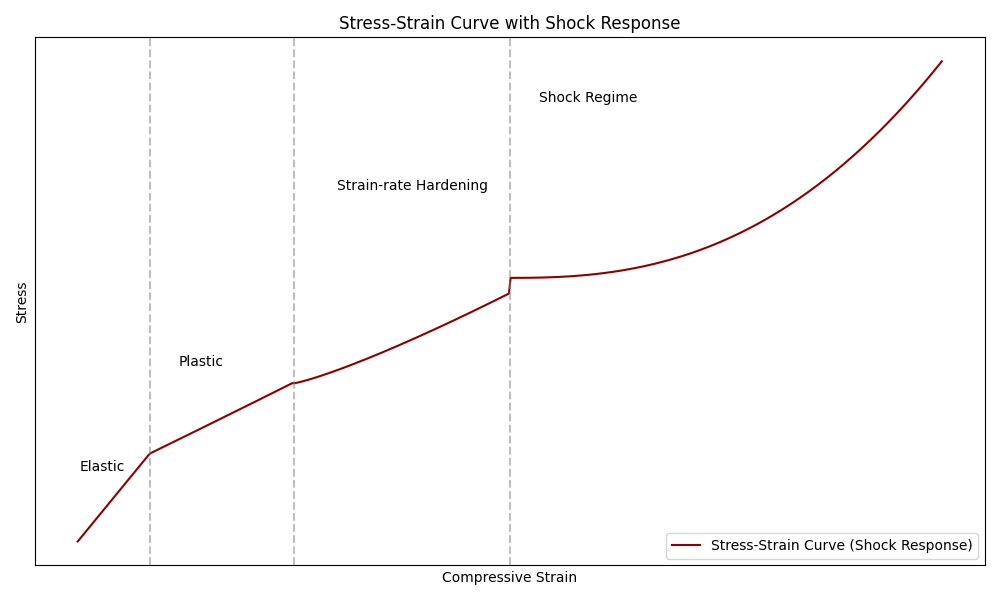Probably the most important fact to know about a shock wave is that it is the same kind of wave as a sound wave. When you hear a sound, what you are hearing is the pressure of the air going up and down in some pattern particular to that sound. This pressure gets to your ear by means of a pressure (or sound) wave, whereby the pressure of one bit of air pushes the next bit of air, bunching it up until it pushes the next bit of air, up until your ear.
Shock waves match this description, so are in that sense, sound waves. What makes them special is that shock waves go faster than the speed of sound. It is worth asking the question: how does a shock wave go faster than a sound wave?
The speed of sound in a material is set by its stress-strain characteristics: when a relatively small pressure is applied to a material (ie it is stressed), it causes a strain which is reversed when the stress is removed. So when a pressure wave moves through the material, the stress it imparts does not cause any deformation. This is called “elastic” behaviour and the elasticity in this sense of a material is what dictates the speed of sound.
The louder the sound, the higher the pressure from the pressure wave, but as long as it is in that elastic region of the stress-strain characteristics of the material, then it will remain at the speed of sound. It is perhaps a little odd to think that quiet and loud noises are both travelling at the same speed, but it is true.
What makes shock waves special is that they cross past that elastic region into the plastic region. This graph from the post “Waveshaping: More Shock for Your Waves” shows the different regimes a pressure wave can travel in:

In this figure, sound waves exist purely in the linear region on the left, the elastic region. Shock waves of the kind we care about with explosives are in the shock regime where the behaviour is plastic, though there is an intermediate area where plastic-elastic combination effects are seen.
So what makes shock waves special is that they have pressures above the elastic limit and hence can travel faster than the speed of sound. There is an interesting and important consequence of this defining fact: shock waves are discontinuities in pressure. Since by definition the shock wave can only exist past the elastic limit, the front of the wave cannot gradually increase in pressure like a sine wave; the shock wave front is a discontinuous jump from ambient pressure to the shock pressure. For as long as there is enough energy to maintain the shock wave, its front is square.
Perhaps this explanation of how shock waves travel faster than regular sound waves is not yet satisfying because it does not explain why the shock wave speed can go faster in the plastic vs elastic regimes. In a sense, shock waves travel faster because they are a combination of the speed of sound and the particle velocity, which is now unconstrained from the need to return to rest elastically.
It turns out that the special behaviour of shock waves compared to sound waves comes down to the discontinuity. The jump from ambient to shock pressure happens along a different pathway to the gradual increase in pressure and so the work that is done is different after the wave passes through; this is why explosives have brisance and loud speakers do not. But fundamentally, a shock wave is just a faster sound wave.

Leave a Reply